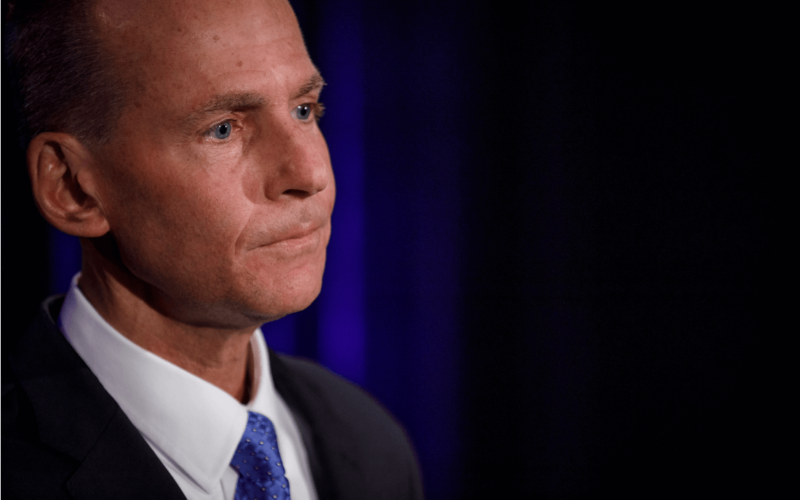A few hours after the certification of the 737 MAX was criticized by a panel of aviation authorities, Boeing CEO Dennis Muilenburg was stripped from his role as a chairman by the Board of Directors, which elected David Calhoun to replace him.
In a press release announcing the change on October 11, 2019, the company says it would allow Muilenburg “to focus full time on running the company as it works to return the 737 MAX safely to service” as well as “sharpen Boeing’s focus on product and services safety”. The new non-executive chairman Calhoun added that “the board also plans in the near term to name a new director with deep safety experience and expertise to serve on the board and its newly established Aerospace Safety Committee”.
The decision came as a surprise, shortly after the Joint Authorities Technical Review, (JATR) conducted by a committee regrouping the FAA, the EASA, and aviation authorities from Australia, Brazil, Canada, China, United Arab Emirates, Indonesia, Japan, and Singapore, as well as NASA, was submitted.
The review criticizes the way the FAA handled the approval of the Boeing 737 MAX. It points at outdated regulations and standards in the face of systems that are becoming more and more complex, and recommends that the certification make sure that fail-safe principles exist in the design “minimizing reliance on pilot action as primary means of risk mitigation”.
Regarding Boeing, the panel asks for a review of the Organization Designation Authorization (ODA) program that allowed the manufacturer to conduct safety inspections and certification of its aircraft using its own engineers certified by the FAA. It suggests that “inadequate communications” regarding the MCAS failed to report “the evolution of MCAS from a relatively benign system to a much more aggressive system”. A failure of the MCAS system was found as the cause of the two crashes of Boeing 737 MAX that killed 346 people. “The lack of a unified top-down development and evaluation of the system function and its safety analyses, combined with the extensive and fragmented documentation, made it difficult to assess whether compliance was fully demonstrated”, says the JATR.
The report asks for the FAA to review if the Boeing Aviation Safety Oversight Office, in charge of tasks such as “certification document approval, findings of compliance, and ODA oversight” has enough technicians to complete them properly, especially since “some of the technical staff are new engineers with limited airworthiness experience”.
Echoing the recommendations made by the National Transportation Safety Board on September 26, 2019, the JATR also requires a reassessment of the time needed by a pilot to respond, especially to cascading failures and multiple alarms.
Following the publication of the JATR, FAA Administrator Steve Dickson said he would “review every recommendation and take appropriate action”.

